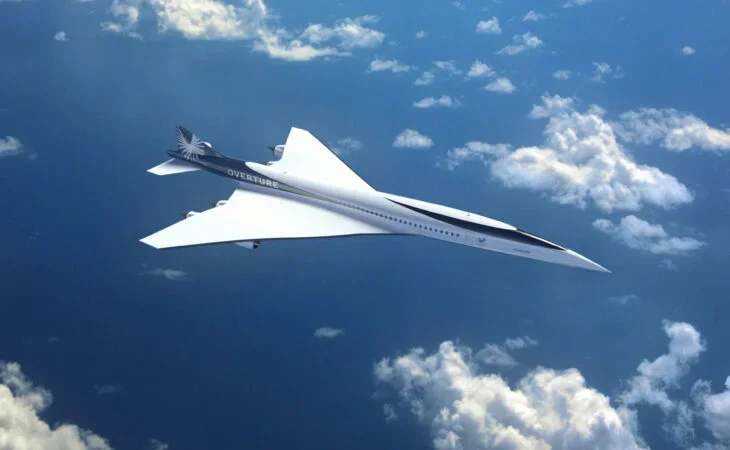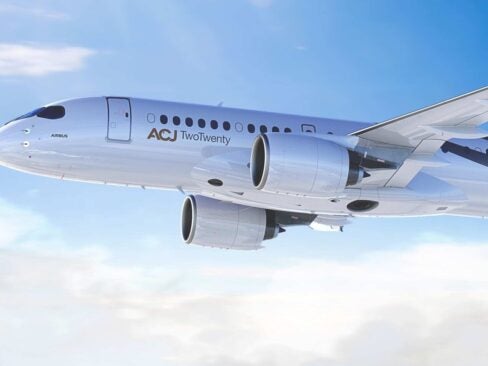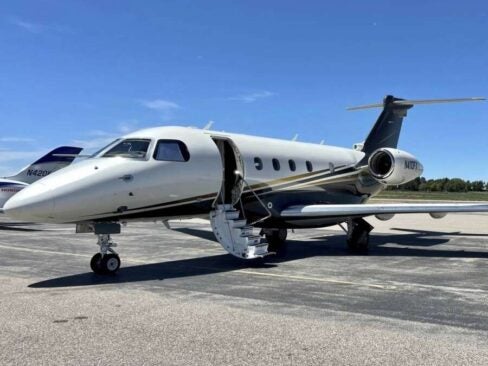Boom Supersonic — the company behind what could soon be the world’s fastest airliner — has today revealed new refined designs of their supersonic passenger aircraft, Overture.
Planned to carry 65-80 passengers at twice the speeds of current aircraft using 100% sustainable aviation fuel (SAF), Overture will revolutionize passenger air travel.
This latest reveal took place at Farnborough International Airshow. The new concept was chosen after 26 million core hours of simulated software designs, five wind tunnel tests, and the evaluation of 51 full design iterations.
“Aviation has not seen a giant leap in decades. Overture is revolutionary in its design, and it will fundamentally change how we think about distance,” said Boom founder and CEO Blake Scholl. “With more than 600 routes across the globe, Overture will make the world dramatically more accessible for tens of millions of passengers.”
[Elite Traveler’s Top Jets in the World]
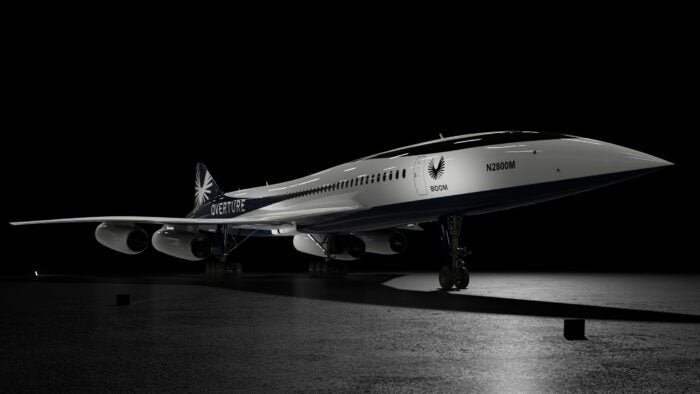
Overture’s four wing-mounted engines will allow the aircraft to accelerate to and cruise at Mach 1.7 / ©Boom Supersonic
This updated design sees Boom realize a number of engineering innovations in aerodynamics, noise reduction and performance.
Overture’s four wing-mounted engines will allow the aircraft to accelerate to and cruise at Mach 1.7 (1,304mph) while over water, and just under Mach 1 when flying over land. At such high speeds Overture will dramatically reduce travel time and effectively shrink the globe for those able to fly in it.
[See also: Eve Unveils eVTOL Cabin at Farnborough Airshow]
This four-engine configuration will also reduce noise — a serious issue for supersonic jets — while conforming to the strictest safety requirements.
Takeoff noise is reduced by the world’s first automated noise reduction system. Upon take off the aircraft is able to fly without the use of afterburners, essentially reaching the same noise levels as current subsonic aircraft.
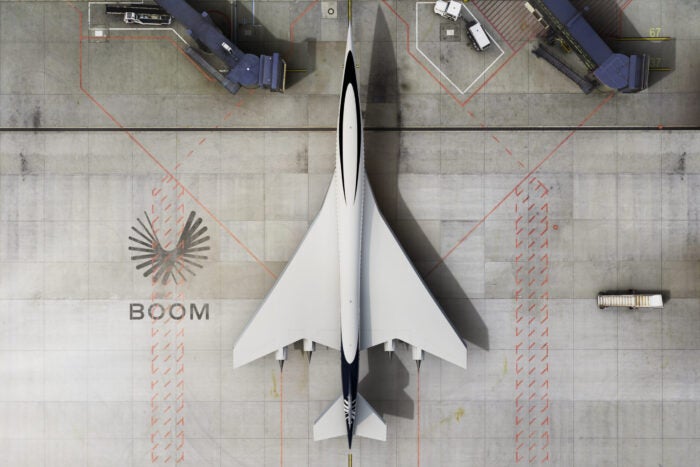
The aircraft’s gull-shaped wings, improve supersonic performance and handling / ©Boom Supersonic
As a way of improving fuel efficiency, Overture’s fuselage gradually tapers from front to rear. This design technique reduces drag, crucial for supersonic aircraft as they are impacted by massive forces especially as they cross the sound barrier. Equally the aircraft’s gull-shaped wings, improve supersonic performance and handling.
The majority of Overture will be constructed with carbon composite materials. These advanced materials are lighter, stronger and more thermally stable than the standard aircraft materials, ensuring safety at high speeds. The nature of carbon composites also allows for more complex curves ensuring the aircraft can take on the most aerodynamic shape.
This new design came with two further statements. Firstly, Boom Supersonic will now begin outfitting “The Iron Bird,” a 70,000 sq-ft ground test facility. It will house the first full-scale test model of Overture in addition to flight deck simulators.
Boom Supersonic has also announced a new partnership with Northrop Grumman. The multinational aerospace and defense technology company that has worked with the US military as well as NASA will work alongside Boom to develop “Special Mission” versions of the Overture.
[See also: Twenty For 20: Iconic Jets of the Past and Future]





